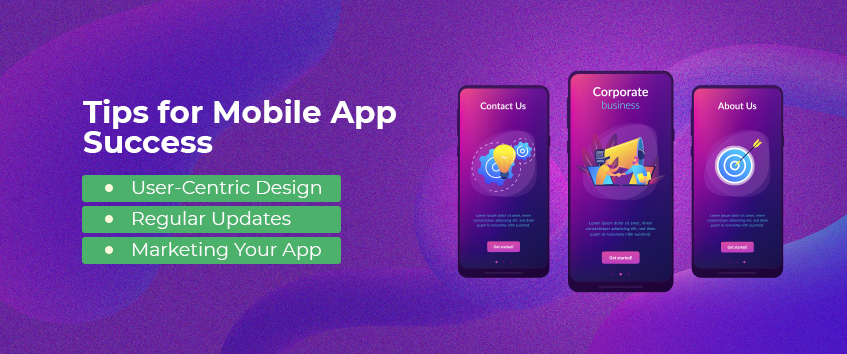Mastering Mobile Marketing: How to Thrive in the Digital Age
May 23, 2024
In today’s rapidly evolving digital landscape, mobile marketing has not just become a cornerstone, but a crucial engine of growth for successful digital strategies. As smartphones become nearly ubiquitous, consumers are increasingly turning to these devices not just for communication, but for a myriad of activities including shopping, entertainment, and managing their daily lives. This shift has made mobile marketing an essential element for businesses aiming to stay relevant and competitive.
In response to these consumer habits, companies must adopt a mobile-first approach. This means designing websites and digital content with mobile users at the forefront, ensuring that all interfaces are intuitive and easily navigable on smaller screens. Websites must be responsive, loading quickly and displaying properly on a variety of devices and screen sizes. This user-friendly approach not only enhances customer experience but also boosts SEO rankings, as search engines like Google prioritise mobile-optimised sites.

Beyond website design, SMS marketing presents another potent tool in the mobile marketer’s arsenal. With open rates far exceeding those of email, SMS offers a direct and effective means of engaging customers. Whether it’s for promoting sales, sending reminders, or offering personalised updates, SMS can reach customers instantly and drive significant engagement and conversions.
App development also plays a pivotal role in mobile marketing. A well-designed app can provide a seamless, interactive user experience that enhances brand loyalty and customer retention. Features like push notifications can keep users informed and engaged, while integration with mobile-specific technologies like GPS and cameras can create richer, more interactive experiences.
To stay competitive, a digital marketing agency in Kerala must prioritise these strategies, adapting to the ever-evolving digital landscape where mobile accessibility is key. By focusing on user-friendly designs and responsive layouts, the agency can enhance the user experience and increase engagement, driving more traffic and conversions from mobile users. This approach not only caters to the immediate needs of the local market but also sets a foundation for sustained digital success.
Mobile-First Design: Prioritising Pocket-Sized Screens
The Shift to Mobile-First
In the digital age, where over half of global website traffic now comes from mobile devices, adopting a mobile-first design is not merely a strategic advantage—it’s a fundamental requirement. This design philosophy involves creating an online experience initially for mobile before adapting it to desktops and other larger devices. By prioritising mobile platforms, businesses ensure that their content is not only accessible but also interactively rich and optimally functional on smaller screens, where most modern users engage with digital content.
Key Principles of Mobile-First Design

Simplicity and Speed: Mobile interfaces should be straightforward and clutter-free. The emphasis should be on delivering information quickly and efficiently, which means prioritising content and features that are essential for mobile users. This could include streamlined menus, reduced text, and optimised images that load faster. Simplifying the user interface reduces load times and enhances user engagement, which is crucial in a mobile context where attention spans are shorter.
Responsive Layouts: It is imperative for sites to be responsive, meaning they should automatically adjust to fit the size and orientation of any device, from the smallest smartphone to the largest desktop monitor. This adaptability ensures that no matter the device, the experience remains seamless and uninterrupted, thereby improving user satisfaction and accessibility.
Touch-Friendly Interfaces: Designing with touch navigation in mind is critical for mobile-first interfaces. This means making interactive elements like buttons, links, and menu items large enough to be easily tapped with a finger, and incorporating gestures like swiping and scrolling that mobile users are accustomed to. Touch-friendly design not only improves the user experience but also speeds up navigation, making it easier for users to find what they need efficiently.
In addition to these principles, mobile-first design also emphasises the importance of testing and optimization. Regularly testing how a site looks and operates on multiple devices ensures an optimal user experience. Also, optimising elements like images and videos for quick loading times is crucial, as mobile users often access the internet on less reliable or slower network connections.
Adopting a mobile-first approach is more than a design strategy; it’s a commitment to meeting your audience where they are most likely to interact with your content. As mobile devices continue to dominate internet usage, businesses that embrace this philosophy are better positioned to succeed in an increasingly competitive digital marketplace. By collaborating with a digital marketing agency in Kochi, companies can further enhance their mobile strategies to effectively reach and engage their target audiences.
SMS Marketing: Engaging Consumers on the Go

Why SMS Marketing?
In the realm of digital marketing, SMS (Short Message Service) marketing stands out as an exceptionally effective channel. It leverages the simplicity of text messages to deliver promotional content directly to consumers’ mobile phones. The strength of SMS marketing lies in its high open rates, which significantly surpass those of email marketing, its cost-effectiveness, and its ability to reach recipients instantly and universally, even without internet connectivity.
Best Practices for SMS Marketing
Personalization: One of the most powerful practices in SMS marketing is personalization. Personalised messages resonate more with recipients, making them feel valued and understood. This can involve using the customer’s name, referencing past purchases, or tailoring offers based on user behaviour and preferences. Such strategies not only enhance the relevance of the message but also significantly boost the likelihood of engagement and conversion.
Timing is Key: The timing of SMS messages is critical. Texts should be sent at opportune times when recipients are most likely to read and act upon them. For instance, sending a promotional offer for a lunch special in the late morning can prompt immediate action, whereas a reminder for an upcoming sale might be best sent in the early evening. Careful consideration of timing can drastically improve the effectiveness of the campaign.
Clear Call-to-Action: Every SMS sent should include a clear and compelling call-to-action (CTA). This might be a prompt to visit a website, redeem a coupon, or participate in a sale. The CTA should be straightforward and easy to understand, guiding recipients towards the desired action without any confusion. Additionally, it’s beneficial to ensure that the landing pages linked in SMS messages are mobile-optimised, providing a seamless transition from SMS to the web.
App Development: While SMS marketing focuses on direct communication, app development offers a broader platform for engaging with consumers through mobile devices. Developing a mobile app can provide businesses with a powerful tool to create deeper and more interactive relationships with their customers. An app can serve multiple functions from providing detailed product information, facilitating purchases, offering personalised recommendations, to delivering customer service.
An effective mobile app should prioritise user experience, ensuring it is intuitive, fast, and reliable. Features should be carefully considered to enhance utility without overcomplicating the user interface. For example, push notifications can be an excellent way to keep users informed about new products, offers, and updates. However, they must be used judiciously to avoid overwhelming or annoying users.
Moreover, integrating social features such as sharing, liking, or commenting can encourage user interaction and foster a community around the brand. This can not only increase app engagement but also enhance brand loyalty and advocacy.Both SMS marketing and mobile app development are crucial strategies in mobile marketing. SMS marketing offers immediacy and high engagement rates, making it ideal for time-sensitive and direct communication. On the other hand, mobile apps provide a rich platform for delivering comprehensive brand experiences and building long-term customer relationships. By understanding and implementing the best practices in both areas, businesses can significantly enhance their digital marketing strategies and achieve greater success in engaging modern consumers.
The Advantages of Having a Mobile App
In today’s digital marketplace, a dedicated mobile app can substantially enhance the way businesses interact with their customers. Unlike websites that can be constrained by browser limitations and slower loading times, mobile apps provide a more dynamic platform for engagement, offering functionalities that are more complex or interactive. This can range from integrated loyalty programs and personalised shopping experiences to augmented reality features and instant customer service.
Tips for Mobile App Success

User-Centric Design: The foundation of a successful mobile app is its design. Focus on creating an intuitive and engaging user interface that enhances usability. The design should facilitate easy navigation and quick access to important features, making the user’s journey smooth and pleasant. A well-designed app not only retains users but also encourages more frequent use, enhancing overall customer satisfaction.
Regular Updates: Continual improvement is key to maintaining an app’s relevance and functionality. Regular updates that introduce new features, fix bugs, and streamline performance are crucial. Updates are also an opportunity to boost security measures, ensuring that user data is protected against the latest threats. By staying updated, an app remains compatible with new device specifications and operating systems, which is vital for providing a stable and consistent user experience.
Marketing Your App: Having a great app is just the start; you need to get it into the hands of users. Develop a robust marketing strategy to promote your app through various channels. Utilise social media platforms to create buzz and engage with potential users. Email marketing can be used to inform existing customers about the app and provide incentives for downloads. Your website should also feature prominent links to the app’s download pages along with QR codes for easy access. Additionally, consider using app store optimization (ASO) techniques to improve your app’s visibility in app stores.
A mobile app opens up a vast array of opportunities for businesses to offer more value to their customers. By following these tips, businesses can not only develop an app that meets the needs of their audience but also ensure it remains a relevant and valuable tool for customer engagement. Investing in a mobile app is not just about keeping up with technological advances—it’s about taking your customer experience to the next level.
Optimising for Mobile Search: Being Visible on Mobile Devices
Importance of Mobile SEO
In the current digital era, the ubiquity of smartphones has led to a surge in mobile searches, making mobile SEO (Search Engine Optimization) more crucial than ever. As the majority of users now access the internet through mobile devices, businesses need to ensure their websites are optimised for mobile to not only improve visibility but also to meet user expectations and enhance the user experience.

How to Optimise for Mobile SEO
Fast Loading Speed: One of the first steps in mobile SEO is ensuring your website loads quickly. Mobile users often search on the go and expect instant results. A slow-loading site can lead to a high bounce rate as users are likely to abandon a page that doesn’t load within a few seconds. Tools like Google’s PageSpeed Insights can be invaluable in identifying and resolving issues that slow down your site, such as unoptimized images, heavy use of JavaScript, or CSS that blocks rendering.
Mobile-Friendly Content: The content on your website should be optimised for mobile consumption. This means it should be concise and structured in a way that makes it easy to scan. Large blocks of text can be daunting on small screens, so it’s beneficial to break up text with ample subheadings, bullet points, and shorter paragraphs. This not only aids in readability but also helps improve the structural markup of your content, which search engines favour.
Local SEO: A significant portion of mobile searches are related to finding local services and products. Optimising for local SEO can dramatically increase your visibility among local searchers. This includes ensuring your business is listed in local directories and on Google My Business with accurate and updated contact details, descriptions, and operating hours. Additionally, incorporating location-based keywords into your website’s content can help you rank higher in local search results.
Responsive Design: A responsive website automatically adjusts its layout and sizing to fit the screen on which it’s displayed, providing an optimal viewing experience for users across all devices. Google prioritises mobile-friendly websites in its search results, so implementing responsive design is crucial. This not only helps with SEO but ensures that users have a consistent experience on your site, whether they’re on a desktop, tablet, or smartphone.
Optimise for Touch: Designing for touch screens means ensuring that all interactive elements like buttons, links, and form fields are of a suitable size and adequately spaced to prevent errors. The user’s journey through your site should be smooth and intuitive, with touch-friendly navigation and accessible design elements.
Use of Structured Data: Structured data markup helps search engines understand the content of your site and provide informative results in the form of rich snippets. On mobile devices, these rich snippets can significantly enhance your visibility and click-through rates. For example, if you’re a local restaurant, structured data can enable your site to display in search results with ratings, prices, or availability.
By following these guidelines, businesses can optimise their websites for mobile search effectively, catering to the fast-paced mobile user and capturing valuable traffic. Mobile SEO is an ongoing process that requires regular updates and adjustments as technology and user behaviours evolve, but it is essential for maintaining competitive edge and visibility in today’s digital marketplace.
The Mobile Imperative

The pervasive rise of mobile technology has fundamentally altered the marketing landscape, ushering in a mobile-centric era that demands attention from businesses across all industries. This shift is not merely a fleeting trend but a profound transformation in how companies engage with their audiences. Today, success in the digital marketplace is increasingly defined by a business’s ability to adapt to and capitalise on mobile technologies. By embracing mobile-first design, leveraging SMS marketing, developing user-friendly apps, and optimising for mobile search, companies can not only keep up with the pace of change but also excel in it.
The mobile imperative is clear, to thrive in today’s digital economy, businesses must transition from merely having a mobile presence to placing mobile at the core of their marketing strategies. This involves understanding and implementing a myriad of mobile-specific tactics—from design and content adaptation to advanced technological integrations like AI and machine learning in apps. The companies that succeed in doing so will not only meet the expectations of the modern consumer but also enjoy a distinct competitive advantage in the increasingly mobile-centric world. Embracing this shift is no longer optional but a critical element of any successful digital strategy. Partnering with an SEO company in Kochi can provide businesses with the necessary expertise to optimise their mobile platforms for better search engine visibility and performance.
